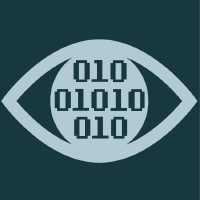Topic Menu
► Topic MenuTopic Editors


Advances in Intelligent Biosignals Processing and Analysis
Topic Information
Dear Colleagues,
Computer-aided diagnosis (CAD) systems are powerful tools for supporting the interpretation of biomedical signals and making clinical decisions. In fact, biomedical signals, including mono- and multi-dimensional signals, yield a great deal of information to be analyzed, correlated with data from other domains, comprehensively evaluated and, possibly, in a short time.
In recent years, precision medicine (PM) has emerged as an approach for disease treatment and prevention that takes into account each person’s variability in genes, environment, and lifestyle. To implement such an approach, radiomics and radiogenomics emerged as modern research fields which, combining large amounts of data extracted from biological signals and genomic analyses, allowed predicting pathological states of patients using intelligent models based on machine learning and deep learning.
Topics of interest could include but are not limited to:
- Biomedical image and signal processing;
- Intelligent decision support systems based on biomedical signals;
- Radiomics and radiogenomics;
- Bioengineering systems;
- Modeling of machine learning and deep learning models for biomedical signals analysis;
- Precision medicine frameworks based on intelligent systems.
Dr. Antonio Brunetti
Dr. Domenico Buongiorno
Topic Editors
Keywords
- intelligent systems
- biomedical signals
- machine learning
- deep learning
- precision medicine
- radiomics
- radiogenomics
Participating Journals
| Journal Name | Impact Factor | CiteScore | Launched Year | First Decision (median) | APC |
|---|---|---|---|---|---|

Applied Sciences
|
2.5 | 5.3 | 2011 | 17.8 Days | CHF 2400 |

Bioengineering
|
3.8 | 4.0 | 2014 | 15.6 Days | CHF 2700 |

Journal of Imaging
|
2.7 | 5.9 | 2015 | 20.9 Days | CHF 1800 |

Sensors
|
3.4 | 7.3 | 2001 | 16.8 Days | CHF 2600 |

Biology
|
3.6 | 5.7 | 2012 | 16.1 Days | CHF 2700 |

MDPI Topics is cooperating with Preprints.org and has built a direct connection between MDPI journals and Preprints.org. Authors are encouraged to enjoy the benefits by posting a preprint at Preprints.org prior to publication:
- Immediately share your ideas ahead of publication and establish your research priority;
- Protect your idea from being stolen with this time-stamped preprint article;
- Enhance the exposure and impact of your research;
- Receive feedback from your peers in advance;
- Have it indexed in Web of Science (Preprint Citation Index), Google Scholar, Crossref, SHARE, PrePubMed, Scilit and Europe PMC.

